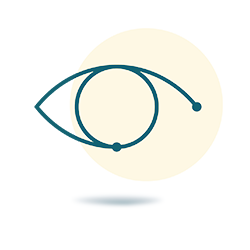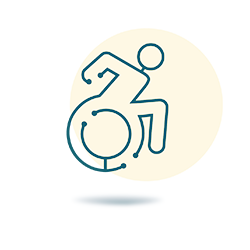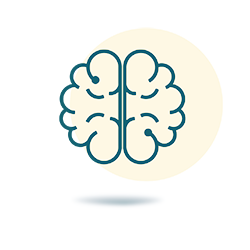Assistive Technology (AT) is any technological solution that enables persons with disabilities to participate in activities, regardless of their disabilities or limitations, as well as to access education, employment, and community.
To learn more about AT, please click on the relevant link below. You can search for a product, find more information about it, who might benefit from using it, and whether or not it is currently available at Mada. This section is being updated constantly with additional products by the staff at the Mada Center on a regular basis.

Vision
This type of assistive technology provides solutions that support visual stimuli and support the sense of shape, size and color. Individuals who may benefit from this technology include persons who are blind, persons with low vision, or those with conditions that limit their ability to recognize visual stimuli.

Mobility and Transportation
Persons with mobility impairments often have difficulties for seating, positioning, and mobility. AT for mobility and transportation is to support individuals to reduce or eliminate the need for human assistance for daily tasks, such as access devices and transitioning from one place to another.

Hearing
Assistive technology for people with hearing disabilities either amplifies sound or converts it into visual or tactile signals. These products are designed to assist deaf and hard-of-hearing people who need help with communication, access to media, and awareness of the sounds around them.

Communication
Assistive technology for verbal communication, also known as augmentative and alternative communication (AAC) devices, was developed to help people with speech difficulties communicate verbally or face to face. These devices may be useful for a wide range of people, including those whose ability to speak has been affected since birth (such as autism, cerebral palsy, down syndrome), those who have lost their ability to speak due to medical problems (such as stroke or brain injury), and those who have temporary communication challenges.

Learning and Cognition
Various assistive technology solutions provide people with learning and cognitive disabilities access to teaching and learning activities, develop cognitive abilities, and apply acquired knowledge and skills.
![]()
Self-care
Various assistive technology solutions provide people with learning and cognitive disabilities access to teaching and learning activities, develop cognitive abilities, and apply acquired knowledge and skills.
![]()
Vocation
AT for vocation is to ensure persons with disabilities achieve their employment goals by incorporating technology solutions to increase accessibility, productivity, and independence.
![]()
Behavior
AT for behaviors is to assist persons with emotional or behavioral disorders to manage their behaviors such as reducing aggressiveness or hyperactivity while increasing appropriate social interactions and participations.
![]()
Environmental Control
AT for environmental controls allow facilitated manipulation and operation of devices in the user’s home, workplace, and in public. AT in this category can be beneficial for persons with disabilities to access and navigate their environment independently.
![]()
Recreation and Entertainment
Recreation and entertainment is vital for a person’s physical, mental, and emotional well-being. AT for recreation and entertainment provides accessible solutions to participate in and enjoy leisure activities such as gaming, listening to music, or watching TV.
